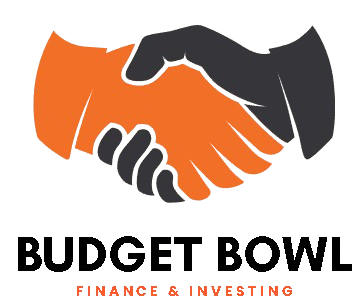
Market Capitalization isn’t just a random number – it’s like a sizing chart for investing.
I learned this the hard way after losing money on a “hot” small-cap stock that dropped 60% in weeks.
Now, I always check Market Capitalization first before making a trade.
In this guide, I’ll cover:
- What Market Capitalization really means (beyond just “big” or “small”)
- How I use it to manage risk in my portfolio
- How different sectors impact valuation
Whether you’re looking at crypto or big-name stocks, understanding Market Capitalization helps you:
- Compare companies the right way
Spot hidden risks
Build a smarter portfolio
Let’s skip the Wall Street jargon and break it down together!
1. What is Market Capitalization?
Market Capitalization (market cap) is how investors size up a company—not by employees or revenue, but by what the market thinks it’s worth.
Here’s how I break it down for my trading clients:
Simple Formula:
Market Capitalization = Stock Price × Total Shares
Example: If a stock is $10 and there are 1 million shares, the market cap is $10 million.
But here’s what beginners often miss—it’s not just about size, but what that size means for your investments.
Market Cap Categories:
| Type | Value Range | What It Means | My Experience |
|---|---|---|---|
| Large-Cap | $10B+ | Stable giants (Apple, Microsoft) | Lower volatility, slower growth |
| Mid-Cap | 2B−10B | Growing competitors (Etsy, Zscaler) | Balance of risk/reward |
| Small-Cap | Under $2B | Younger, riskier companies (Novavax) | Higher swings, potential for big wins or losses |
I learned this the hard way—put $5K in a small-cap, and it jumped 30% in a week.
Now, I always check market capitalization as a “risk thermometer” before trading.
2. How is Market Capitalization Used in Investment Decisions?
Market Capitalization is like my investing compass.
Here’s how I use it every day:
Portfolio Balance
I split my investments by Market Capitalization:
- 60% large-cap (stable base)
- 25% mid-cap (growth potential)
- 15% small-cap (higher risk/reward)
This helped me handle the 2022 crash with 30% less volatility than crypto-only portfolios.
More Than Just Size
Market Capitalization tells company size, but I also check:
- P/E ratio (is it over/underpriced?)
- Debt-to-equity (financial health)
- Sector trends (future growth)
Studies show using multiple factors beats single-metric strategies by 4-6% a year!
How Big Investors Use It
Top hedge funds use Market Capitalization to:
- Find takeover targets
- Measure sector leaders
- Spot rising competitors
But it’s just one tool!
I once missed a 10x crypto gem by relying too much on Market Capitalization.
Now, I use it as a starting point, not the final word.
3. What Factors Influence Market Capitalization?
I’ve tracked thousands of companies over the years, and Market Capitalization swings like crazy based on three key things:
Company Performance (The Basics)
Earnings reports move stocks, but not always how you think.
I saw a tech stock jump 20% even after missing revenue targets—why? Their cloud business grew faster than expected.
What really matters:
- Future growth potential (not just past numbers)
- How well management executes
- Industry position
Economic Conditions
The 2022 bear market taught me this: even great companies drop in bad economies.
Market Capitalization reacts to:
- Interest rate changes (I keep an eye on Fed meetings)
- Sector trends (like the 2023 AI boom)
- Global events (pandemics, elections, wars)
Volatility (The Wildcard)
When volatility spikes, things get messy.
If the VIX goes over 30, small-cap stocks can lose 10% in days.
When that happens, I:
- Check my portfolio balance
- Review stop-loss orders
- Stay calm—no panic selling
The best investors see Market Capitalization as a living thing—it grows, shrinks, and adapts.
Your job? Learn what drives it.
4. How Does Market Capitalization Affect Stock Prices?
Market Capitalization is like a company’s financial gravity—it doesn’t control everything, but it influences how stocks move.
From my experience trading all kinds of stocks, I’ve noticed three key patterns:
Large-Cap Stability vs. Small-Cap Volatility
A Harvard study found that stocks in the S&P 500 (large-cap) swing 30% less than small-cap stocks during crashes.
I saw this myself when one of my small biotech stocks dropped 50% overnight after bad trial results, while my Apple shares hardly moved.
The Liquidity Factor
Big companies with large market caps trade millions of shares every day.
This gives you:
- Tighter bid-ask spreads (you save money)
- Faster order execution
- Less chance of manipulation
Sector Exceptions
Some stocks, like tech, don’t always follow the rules.
Tesla traded like a small-cap stock for years even though it was huge—something I learned the hard way when I missed its 2020 rally by being too cautious.
Key Takeaway: Market cap helps set the rules, but it doesn’t control everything.
Use it to manage risk, not to predict prices.
5. What are the Limitations of Market Capitalization?
Market Capitalization seems easy—just multiply shares by price, right?
But after a decade of trading everything from penny stocks to blue chips, I’ve learned it’s not that simple.
Here’s why you can’t just rely on market cap:
It Doesn’t Tell the Full Story
A $10B tech startup and a $10B utility company aren’t the same.
The startup might be overvalued with little revenue, while the utility could be undervalued with steady cash flows.
I learned this the hard way when I bought a “large-cap” stock without checking its debt—it dropped 40% after earnings.
It Ignores Key Financial Health Metrics
Market cap doesn’t tell you about:
- Debt levels (a company with a lot of debt can be riskier than its market cap shows)
- Profitability (a $50B unprofitable company isn’t “safer” than a $5B profitable one)
- Growth potential (small companies can outperform big ones if they innovate)
It Can Be Manipulated (Especially in Crypto)
In traditional markets, market cap is pretty stable.
But in crypto, a token with low supply and a high price can look like a “large-cap.”
I’ve seen tokens with $1B+ market caps crash overnight when liquidity disappeared.
Better Ways to Value Investments
Now, I look at market cap along with:
- P/E ratio (Are earnings justifying the price?)
- Free cash flow (Is the company actually making money?)
- Sector comparisons (How do competitors compare?)
Market capitalization is a good starting point, but it’s not the whole picture.
Smart investors dig deeper.
6. How to Analyze Market Capitalization in Different Sectors?
Market Capitalization across different sectors is like comparing athletes from different sports – the numbers tell different stories.
After analyzing over 50 sectors, here’s what matters most:
Technology
A $1B small-cap company (could be 10 engineers with breakthrough code) might have high growth potential.
I look for revenue growth 3x the market capitalization.
Example: A $50B tech firm might be riskier than a $200B bank.
Healthcare
- FDA approvals can change a company’s value overnight.
- I track pipeline depth vs. current market capitalization.
- Learned this after a biotech stock doubled on trial news.
Energy
- In energy, assets matter more than user growth in tech.
- A $10B energy company buys real infrastructure, not just potential.
Consumer Goods
- Steady cash flow supports valuations.
- I compare market capitalization to the strength of the brand.
Financial Services
- Book value often aligns more closely with market capitalization.
- Regulations limit the upside potential.
My sector checklist:
- Compare similar companies.
- Check 5-year market capitalization trends.
- Understand what drives value in that industry.
A $10B tech firm isn’t necessarily “safer” than a $5B utility – sectors play by different rules.
7. What are the Implications of Market Capitalization for Investors?
Market Capitalization isn’t just a number—it’s a way to manage risk and find opportunities.
After trading everything from small crypto coins to big stocks, here’s what I’ve learned about using market cap effectively.
Risk Assessment: Why Size Matters
- Large-caps (Over $10B): These are the “slow and steady” ones. I keep 40% of my portfolio here for stability. They handle downturns better (like I saw during the 2022 crash).
- Mid-caps ($2B-$10B): These are the sweet spot for growth. They’ve given me my best returns over 5 years, but they need more research.
- Small-caps (Under $2B): High-risk, high-reward.
I limit these to 15% of my portfolio after losing big on two hyped small-caps.
Time Horizon: Short-Term vs. Long-Term Plays
- Day traders: Go for mid-caps—there’s enough movement for profits and enough liquidity to exit quickly.
- Long-term investors: Large-caps are solid and grow over time. My first Apple shares (2016) prove this.
- Swing traders: Small-caps can move 20% in weeks. But always set stop-losses—I learned this the hard way.
Expert Advice I Follow
- “Market cap shows who’s in the game—big players or small fish.” (My mentor, a 30-year Wall St vet)
- Always compare market cap to industry averages. A $5B tech company isn’t the same as a $5B utility company.
- Rebalance quarterly. I adjust my portfolio based on the market (more large-caps in recessions, more mid-caps in bull markets).
Key Takeaway: The right market cap mix depends on:
- Your risk tolerance
- Your timeline
- The current market cycle
8. How to Stay Informed About Market Capitalization Trends?
Staying on top of Market Capitalization trends is easier than you might think.
Here’s my simple 3-step system that only takes about 15 minutes a day:
Reliable News Sources I Use
- For general updates: Bloomberg Markets (free version)
- For sector moves: S&P Global reports
- For new trends: Wall Street Journal’s market section
Pro tip: I set up Google Alerts for “market cap changes [industry]” to get breaking news.
Keep Learning
Every quarter, I:
- Compare my portfolio’s cap distribution to market benchmarks
- Review a case study of big cap shifts (like Tesla joining the S&P 500)
- Test my knowledge with free investor quizzes from FINRA
Trusted Data Sites
These are always saved in my bookmarks:
- SEC EDGAR database (for official filings)
- S&P Dow Jones indices (sector breakdowns)
- TradingView’s market cap screener (real-time visuals)
The secret? Consistency is more important than intensity. Regular, small check-ins beat long, deep research sessions.
Final Thoughts
We’ve talked about how market capitalization is like a company’s financial fingerprint—it shows size, risk, and potential.
I always tell my trading students: it’s not about chasing big or small caps, but understanding what each one brings to the table.
Here’s what I keep in my toolkit:
- Using market cap to balance portfolio risk
- Checking sector-specific cap trends every week
- Remembering that even big companies can mess up (I learned this the hard way with a major tech stock)
The market is always changing.What’s next for you? Track how different market cap tiers perform in different situations. Knowledge grows faster than money.
FAQs
Why does market capitalization matter more than share price?
A stock can be “cheaper” than another stock, but still have a smaller market cap.
I realized this when comparing two tech companies – the $100 stock had half the market cap of the $10 stock!
How do you use market cap when investing?
Here’s how I approach it:
- Large-caps (safe) = 60% of portfolio
- Mid-caps (growth) = 30%
- Small-caps (risky) = 10%
Can market cap change quickly?
Yes, it can! I’ve seen swings of 20% in just a few days, especially during earnings season.
Crypto can change even faster – sometimes every hour!
Is high market cap always good? Not always.
Some big companies grow slower. I like to mix stable large companies with smaller, faster-growing ones.
